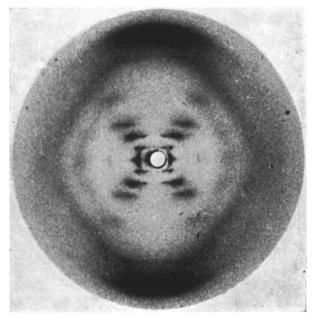Christmas 2025 opening hours
Franklin, The True Hero Of DNA
In the 1960s, when asked to draw a scientist, only 28 out of almost 5000 primary school students drew a female scientist. This was the result of David Chambers' experiment. Not a single female scientist was drawn by a boy.
What do you think this number would be in 2020?
A meta-analysis of 78 Draw-A-Scientist studies found that 28% of the drawings were of female scientists. Compared to Chambers’ original result of 0.6%, this meta-analysis highlighted that this was only half as many male scientists.
Even in 2020, many continue to unconsciously associate the concept of ‘science’ with the concept of ‘male’. These implicit biases are certainly not making it easier to welcome more women to the field as only 30% of the world’s researchers are women.
But, the struggle does not end there. Credit in science is not often distributed fairly and this tendency to casually “forget” or not acknowledge women scientists’ contributions is so commonplace that it’s got its own name: the Matilda effect.
The oft-featured story when talking about the Matilda effect is Rosalind Franklin. Her pioneering work and essential contributions to the discovery of the molecular structure of DNA pretty much went largely unnoticed.

Who was Rosalind Franklin?
Born in London, Franklin was an “alarmingly clever girl”, showing exceptional academic ability from a young age. She began to fulfil her childhood dream of becoming a scientist when she studied chemistry at the University of Cambridge. There, she continued her scientific career, earning a PhD and then moving to France for post-doctoral work in x-ray crystallography of carbonaceous solids.
Rosalind didn’t encounter DNA until she took a position at King’s College London in the 1950s. It was here in John Randall’s Biophysics Unit that she used her physical chemistry background to image DNA specimens. Her improved technique led to higher quality images and crucial data on the structure of DNA.
Final Push to the Finish Line
Simultaneously at the University of Cambridge, James Watson and Francis Crick were working on building molecular models of DNA. When they came to visit Maurice Wilkins, Franklin’s colleague at King’s, he showed them the famous ‘Photo 51’, one of Franklin’s x-ray images, unbeknownst to her. Wilkins, until then, hadn’t grasped the importance of Photo 51, simply presenting it simply as something new Franklin had found. Nevertheless, the significance of this image was not lost on by the Cambridge duo.

Franklin’s Photo 51 was the last piece of their puzzle. They swiftly revised their calculations and models, ready for publication in in March of 1953. Only then was Franklin alerted that her data had been used.
(not) Giving Credit Where It’s Due
Thinking optimistically, you may have expected Watson and Crick to acknowledge Franklin’s catalytic contribution to their work. Instead, a simple diluted credit was given in the paper by way of appreciation.
“We have also been stimulated by a knowledge of the general nature of the unpublished experimental results and ideas of Dr. M.H. F Wilkins, Dr. R. E. Franklin, and their co-workers at King’s College London.”
Although Rosalind independently published her own article in detailing her contributions, it is Watson and Crick who soared to global fame almost instantaneously. And, it is they who were crowned the pioneers of DNA in GCSE science textbooks.
In 1954, a year after their original Nature article, Crick acknowledged that “without this [King’s] data, the formulation of our structure would have been most unlikely, if not impossible”. It was only after Rosalind’s death that Crick fully admitted, “the Franklin photograph was the key event”.
Franklin’s Legacy
We have to remind ourselves that women scientists cannot be defined by missed opportunities. We can not reduce Franklin to the role of the unsung hero of DNA. Her work on DNA makes up only a fraction of her scientific career. She was an expert in virology and in essence, because of Franklin and many more, we are able to use techniques such as DNA sequencing and x-ray crystallography to investigate the virus at the root of the COVID-19 pandemic, SARS-CoV-2. Franklin also made significant breakthroughs in the science of coal and carbon, even aiding the design of the PPE for her generation. She was a leader in the scientific community with an international reputation who wanted to put her research to good use.
Research highlights that science faculties at universities have gender biases that favour male students, offering them a higher starting salary and perceiving them to be more competent and hireable than the identical female counterpart. It’s not that these institutions aren’t trying to hire more women scientists.
To tackle this, people all over the world have started initiatives to mentor, guide and introduce women to science. These organisations have been crucial to the growing presence women in this historically-male dominated subject.
Finally, here are some of the many wonderful organisations who have been doing incredible work, we urge you to take a look and get in touch:
- Girls Who Code is a nonprofit organisation focusing on equipping the girls with essential computing skills and changing what it means to be a programmer.
- Tech Needs Girls is a movement and mentorship program based in Ghana. They have trained almost 5000 girls as well as increased awareness of the importance of higher education, especially to many underprivileged girls who are forced into early marriage.
Science Grrl is a grassroots organisation that elevate the profile of women scientists through local chapters, policy changes and creating public events and festivals.
